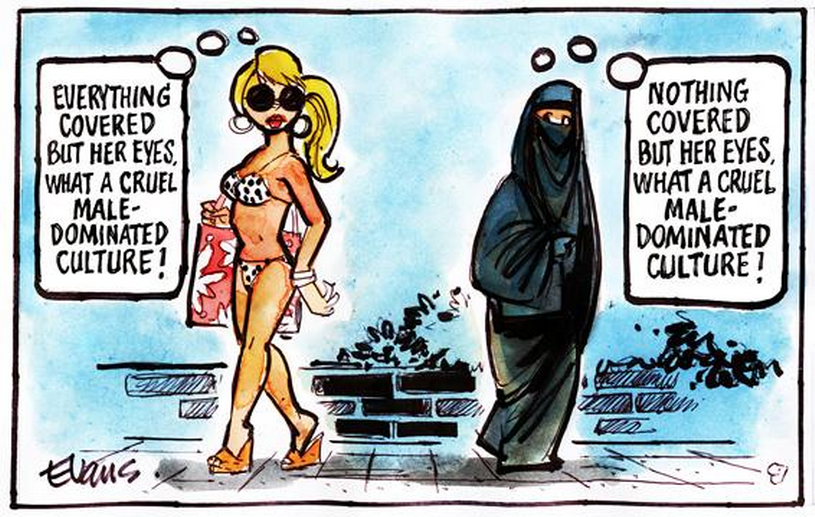For many representatives of the Western culture, the fact that women in the East wear the burqa is the ultimate sign of their oppression. As a consequence, liberals tend to be surprised at Eastern women choosing to continue to cover even when they have an opportunity not to do so. This type of thinking is the consequence of the occurrence known as ‘false binary’, a fallacy founded on the premise that there are only two options that are mutually exclusive. That is, those who deem themselves liberated often perceive people from other societies to be oppressed, which is a mistake. In reality, the issue of women’s freedom in Muslim countries is much more nuanced than commonly thought. Simply because their ways of living and dressing differ from those of Western women does not necessarily mean they are oppressed.
First of all, it is important to recognize that the burqa was not invented by forces willing to bring women into subjection. According to Abu‐Lughod, it was a form of covering worn by female inhabitants of one Afghan region when they went outside (533). In a variety of settings, the burqa symbolized the division of the spheres between the sexes within the framework of women’s general association with home and family rather than with public space (Abu-Lughod 533). Moreover, many felt that the burqa liberated women due to it enabling them to leave isolated living spaces while respecting the basic moral requirements of their way of living.
Consequently, in all places, such covering is a signifier of belonging to a certain community and participation in a certain moral lifestyle in which the family plays a primary role in organizing communities and the home is associated with women’s sanctity. Therefore, it should not be surprising that Eastern women would not want to get rid of burqas, their respectability markers, and means of protection from the harassment of strangers in the public sphere (Abu-Lughod 534). If anything, they might wonder why women in the West choose to walk the streets showing their skin, attract men’s attention, and consider it liberation.
The false binary between what it means to be ‘liberated’ and ‘oppressed’ in the eyes of representatives of different cultures is portrayed in an image by a cartoonist named Malcolm Evans. In the image – attached as Picture 1 – a Western woman in a swimsuit and a Muslim woman in a burqa watch after one another and are shown to think almost the same thought. It reads: “Everything/Nothing covered but her eyes, what a cruel male-dominating culture!” (Picture 1). Abu-Lughod would say that none is more liberated or oppressed than the other. People wear clothing that is appropriate for their specific communities, and they are guided by common social standards, religious beliefs, and moral values (Abu-Lughod 534). If one thinks that women in the West have absolute freedom of choice when it comes to clothes, they need to remind themselves of the role fashion and current trends play in the way they dress.

In conclusion, assuming that Eastern women are oppressed due to them wearing burqas and covering their bodies is fundamentally wrong. In a similar vein, one should not assume that Western women are liberated only because they seemingly can freely choose what to wear and decide to show their skin. The false binary that promotes this type of thinking focuses on clothes as the only signifier of liberation or oppression and ignores other, much more important factors contributing to either occurrence. The way one dresses is influenced by a variety of cultural, social, and religious aspects, and it does not have much to do with the amount of freedom one possesses.
Work Cited
Abu‐Lughod, Lila. “Do Muslim Women Really Need Saving? Anthropological Reflections on Cultural Relativism and Its Others.” American Anthropologist, vol. 104, no. 3, 2002, pp. 530-540.